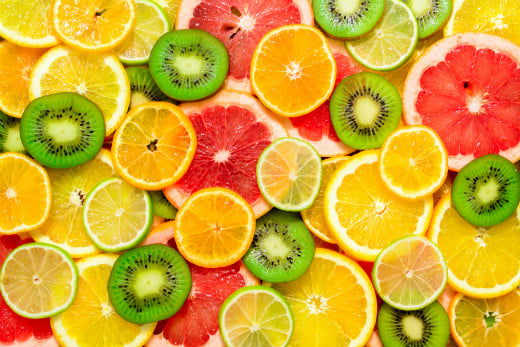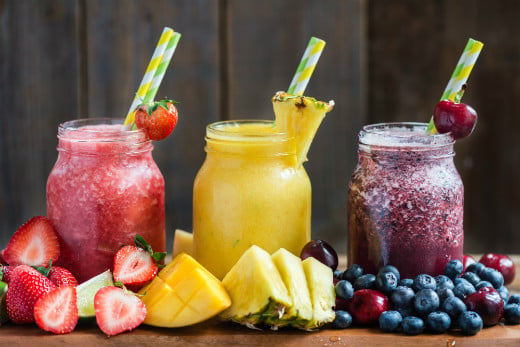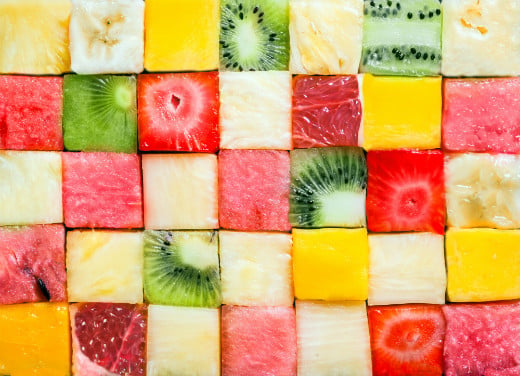Owning a fruit platter business with my husband means the occasional trip to Costco for some last minute orders. While he prefers to run in and out, my poor husband cannot make it down a single aisle without “Mr. Frishman, can you choose a cantaloupe for me?” Or “ Do you know if this package of peppers is from Israel and problematic?”
Me? I love talking about fruit. Maybe because I haven’t sliced over 27,000 platters in my lifetime as he has. With that in mind, I decided to help you out and give you some tips on making the most of serving fruit to your guests. Who knows, maybe I’ll stick a few of these in his pocket to hand out next time he’s in the grapefruit aisle!
Whether you are hosting a shalom zachar or making a vort for 400 of your closest friends, here are some ways to maximize what you offer:
- Choose fruits from similar families to create a fruit salad. To make a tropical one, think kiwi, pineapple, mango, papaya, and guava. For a variety of stone fruits, think apricots, plums, peaches, and cherries. (Isn’t that cute? Cherries are like itty-bitty peaches…) Make a delicious salad that is homogenous in taste while varying in flavors.
- While we are on the topic of how to gather your fruit ingredients, here is something you should not mix into any fruit salad: Watermelon. Because the juices will often ruin the other fruits, it’s best to avoid this one. I feel the same way about oranges, however, if you are doing a citrus fruit salad of blood oranges, Florida navels, red grapefruit, and even a pomelo, then you can use oranges. Otherwise, steer clear.

- Color-coding your party isn’t always the way to go. Many times, a party planner will tell me the color scheme of her party and insist that I only send fruit of those shades. It may work for a green design (kiwis, green grapes, honeydew and baby lady green apples are cute…), but if you are insisting on a fuchsia event, serving watermelon and strawberries might sort of match, but then your party is limited to two fruits. G-d created a rainbow to eat! Leave the décor decisions to the plates and cutlery.
- Have an idea of what fruits you are going to serve a few days ahead. Nothing would cramp your style like cutting into a rock hard cantaloupe or a mushy mango. By figuring out your quantities before the party, you can “feel out” the fruit and buy cantaloupes on the harder side a few days in advance of the party and get those mangoes in time for them to be perfectly soft, but not mushy.
- Ok. So you didn’t read number four and now you are stuck with a case of mangoes that are uber-mushy. No worries. I tell all my customers that leftover fruits from a platter (You know, the extra one you ordered when I said you didn’t need it, but you insisted on?) can be cut up and packaged in baggies. Throw a baggie of mango, a few frozen strawberries, and a handful of frozen blueberries in a blender and voilà: breakfast smoothie that is tasty and economically savvy.

- Even wonder how you ended up with that mango that was mushy? (Yes, I am obsessed with mushy mangoes!) It might be because you aren’t buying fruit in season. Here is a tip to help you remember: Citrus fruits, high in Vitamin C, are at their peak in the winter. So are pomegranate seeds, which are very high in antioxidants. On the other hand, when are those hydrating melons sweet and perfect? The summer, when we need to up our water intake. Buying what’s in season isn’t just more economical; it’s also healthier for you!
- Here’s a fruit tip that makes cutting your fruit less wasteful—and frankly less dangerous. Looking at your fruit, say a pineapple, lay the fruit on its side and cut off the top and the bottom. Now stand the fruit up, and slice directly under the skin from north to south. The flat bottom will make it sturdier on the board (Use a cutting board—not a paper plate and a steak knife), and you will be at eye level to better gauge how to cut it.
- Let’s talk about knives. If I had a nickel for every time people asked me which knife to use— well, to be honest, I would not be rich. I mean, I am only getting a nickel per query. You’d have to get a crazy amount to be rich. But I will tell you that it’s a common question. The best knife to buy is the one that you are comfortable holding in your hand. I have small hands and long fingers. When I hold a knife, it will feel very differently than when my husband does. The grip should be comfortable. You should be able to reach your pointer over the top of the blade and the weight of the knife should be heavy enough to go through the fruit, but not too heavy that you don’t have control over the knife.
- Another safety tip since we were on the topic: Contrary to what sounds like good advice, the sharper the knife, the safer it is. A dull knife will slip off of what you are cutting and possibly injure you. Keep your knives sharp.
- My final tip: When cutting fruit, cut the pieces uniformly. That doesn’t mean that every piece has to be an exact one-inch cube. But having a bowl of four different sized cubes looks kind of messy. Keep all the fruits either diced or in French fry strips.

For diced, the smallest I suggest is the size of a marble. Any smaller, and you are making the beginnings of a smoothie. French fry strips are very cool, but just be aware that you will probably waste a bunch of fruit when using round melons. Still, you can nosh on the rest as you set up the display. And speaking of display, make it as fun, colorful, and fruitful as possible! Happy eating!
——————————
Chaia Frishman owns Fruit Platters and More with her husband Eliahu. She is a community board manager of kosher.com and a recipe creator for both kosher.com and Mishpacha Magazine’s Family Table. Follow her on Instagram @chaia.frishman.freelance





